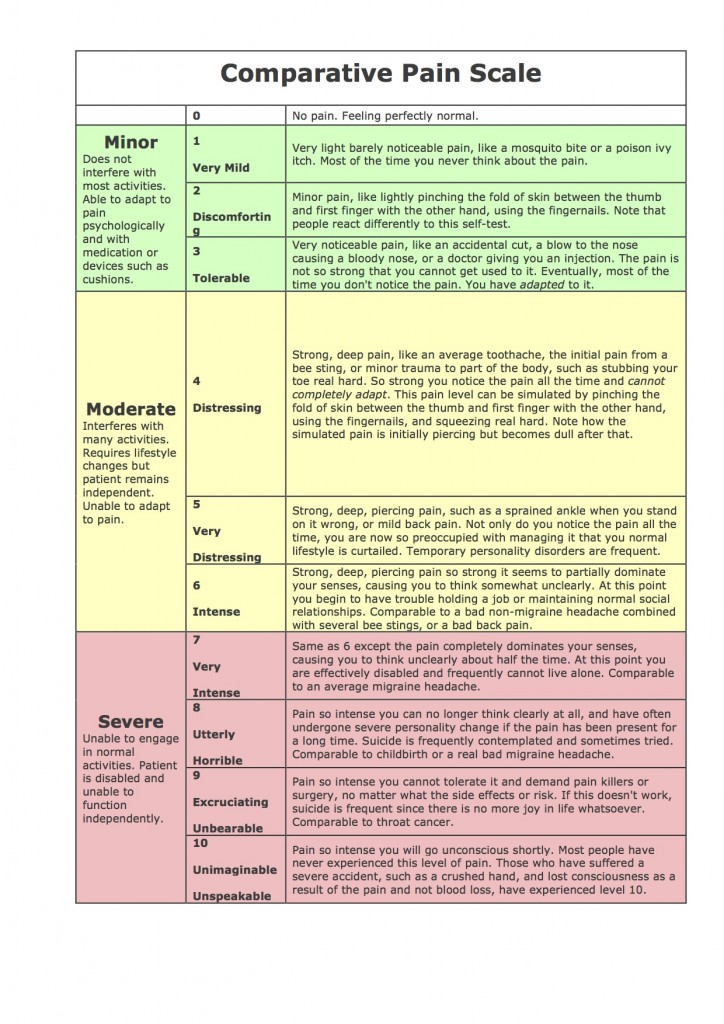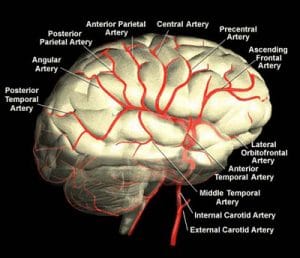
The 4 stages of a migraine attack
Migraine Prevalence
Migraine affects approximately 3 million people in Australia1. Up to 7 million people in Australia also suffer from Tension-Type Headache. World wide it has a prevalence of affecting nearly 15% or approximately one billion people2 . It is regarded as the third most prevalent disorder in the world, and has recently been ranked the third most highest causes of disability in the world3. In Australia the direct and indirect cost of migraine alone is costing up to $1 billion p/a. Women are three times more susceptible to developing migraines than men. It can affect an individual at any stage of their lives, but is more common before the age of 40. Around half of all migraine sufferers also have a family history of migraines.
Its severity can vary from moderate pain whereby sufferers can still function their day to day activities, to severe pain whereby migraine sufferers are forced to immediately stop whatever they are doing, and lie down in a dark and quiet room. It can be so severe that sufferers of this condition have lost their jobs due to the amount of extensive sick days they have accumulated. It can also cause relationship and marital breakdowns because of the symptoms.
The 4 Migraine Symptoms and Phases
There are 4 main stages during a migraine attack. Below are the 4 stages and the signs and symptoms that occur during a migraine. Not all sufferers experience all 4 stages or all of the signs and symptoms listed below. Attacks from an individual can vary greatly from the next, as well as from other sufferers.
- Prodrome
- Aura
- Attack
- Postdrome
Video 1: The 4 Migraine Phases
1. Prodrome
Before the onset of a migraine attack, sufferers may feel subtle changes to their mood and body, either several hours before or up to two days before a migraine occurs. Signs and symptoms of a migraine Prodrome phase are listed below:
- Irritability
- Neck stiffness
- Food craving
- Thirst
- Either unusual high energy levels and excitability or low energy levels and depressed
- Uncontrollable yawning and tiredness
- Difficulty in concentrating
- Constipation or diarrhoea
Video 2: Migraine Prodrome
2. Aura
Migraine aura symptoms usually occur immediately before the onset of a migraine attack. It usually commences and lasts for 10-30 minutes before the attack commences. During this phase sufferers most commonly develop visual disturbances such as flashing lights. Other visual disturbances may include black dark spots in the visual field, which can engulf the entire visual field and cause temporary blindness in one eye. Sufferers may also develop tunnel vision whereby the periphery visual field becomes blurred. Other aura symptoms may include altered sensation of the skin (sensory), altered bodily movement patterns (motor) or altered speech issues (verbal). Examples of aura symptoms are listed below:
- Visual disturbances such as seeing bright or dark spots, flashing lights, seeing various shapes, or becoming temporarily blind in one eye.
- Sensory disturbances such as developing symptoms like pins and needles or numbness in the face, neck, arm or leg.
- Motor disturbances such as having a droopy face or weakness in the arms and legs
- Aphasia: speech or language disturbances whereby sufferers have difficulty speaking and articulating their words
Video 3: Migraine Aura
3. Migraine Attack
If the signs and symptoms of a migraine aura is left untreated or was unable to be treated, the migraine attack phase will commence and will last on average 4 to 72 hours. The severity of the attack phase varies from person to person and is regarded as a moderate to a severe scale rating. Below is a diagram to guide what a moderate to severe pain scale rating is.

Pain scale rating from 0 to 10.
During the attack phase migraine features such as the following can occur:
- Pain is usually on one side, or always stronger on one side
- Pain can shift unilaterally from side to side
- Pain has a throbbing and pulsating quality
- Heightened sensitivity to light (photophobia), sound (phonophobia) and smell (osmophobia) can occur
- Nausea and vomiting
- Aura symptoms may continue with visual, sensory, motor and speech disturbances
- Worsened by physical activity
- Dizziness and or vertigo
- Concentration loss
- Confusion
- Dehydration
- Depression, anxiety, panic attacks
- Diarrhoea or constipation
- Fluid retention
- Neck pain
- Nasal congestion
- Hot flushes and or chills
Video 4: Migraine Attack Symptoms
4. Postdrome
During the final stages of a migraine, known as the postdromal phase, sufferers may feel washed out, tired, lethargic and some report of feelings which are similar to a hangover. The severity and intensity of feeling washed out usually depends on the duration of the migraine attack and its severity. Typically if a migraine only lasted for 4 hours, the sufferer may not feel a significant postdrome effect. However, if a sufferer has a severe attack which lasted for over 3 days with nausea and vomiting during that entire time, it can then take a few days to obtain full recovery from the attack.
Postdrome symptoms may include:
-
Fatigue
-
Lowered intellectual levels
-
Lowered mood levels, especially depression, or feelings of well-being and euphoria
-
Poor concentration and comprehension
- Read more http://migraine.com 4
Video 5: Migraine signs and symptoms
The 4 phases of migraines in summary
The above 4 phases of a migraine attack are typical signs and symptoms that migraineurs suffer from. It is important to note that not all sufferers may experience all of these 4 phases, and attacks can vary greatly from one person to another. Below are further facts and figures about migraines.
The old theory of the cause of Migraines
It is important to understand that the old theory of migraines being a vascular disorder, has been proven false. It was originally thought that migraine was caused by dilatation and expansion of blood vessels in the head. This old theory of blood vessels expanding was believed to be the cause of the throbbing and pulsating-like pain that sufferers feel during an attack.
Recent studies utilising transcranial Doppler have shown that migraine is not a vascular headache, and there was no significant vasodilation of the blood vessels in the brain during a migraine attack. 5 Further studies also compared those suffering from a migraine attack to those who were not suffering from an attack, revealed that there was no significant differences with blood vessels dilating and expanding 6. For further information on the old theory of migraine causes click here.

Migraine and blood vessels
The Migraine Cause
Recent discoveries and research have found the primary contributing factor of migraines is a neurological disorder and is due to a SENSITISED BRAINSTEM. The brainstem is located below the brain and is situated as low as the upper three cervical spine of the neck. The trigeminal nerve is also situated in the brainstem, and once it has been irritated and in a hypersensitive state, pain can then travel into the head 7. Sufferers may feel pain in the tooth, jaw, eyes, temples, forehead or anywhere in the head. Along with the pain, sufferers may then experience the above 4 phases of a migraine attack. For further information on the migraine cause click here.

Migraine and brainstem
The Treatment of Migraines
Treating the cause of your migraines is the most effective way in managing, controlling and stopping your migraines. Treating symptoms alone, such as ingesting medication, massages, or even having cosmetc injections only hides and masks the pain away, however does not treat the cause of your condition.
A new era in managing and treating migraines has been developed through the latest research and evidence of migraine causes. Finally there is a viable treatment option to treat the cause, being the brainstem, and to desensitise the brainstem itself. For further information on the treatment click here.
Key Fact and Figures about Migraine
-
Migraine is amongst the three most prevalent health conditions worldwide, along with anaemia and hearing loss (The global burden of disease: 2004 update, World Health Organization)
-
Among adults of all ages, migraine is one of the top 20 causes of disability expressed as years of healthy life lost to disability (The World Health Report 2001: Mental Health: New understanding new hope)
-
Severe migraine attacks are classified by the World Health Organisation as among the most disabling illnesses, comparable to dementia, quadriplegia and active psychosis (Shapiro & Goadsby, Cephalalgia, September 2007)
-
Migraine is the least publicly funded of all neurological illnesses relative to its economic impact (Shapiro & Goadsby, Cephalalgia, September 2007)
-
In the UK, there are an estimated 190,000 migraine attacks every day (Steiner et al, Cephalalgia, 2003)
-
An estimated 25 million days are lost from work or school every year because of migraine (Steiner et al, Cephalalgia, 2003)
-
Just over a third (34.3%) of migraine sufferers face difficulties or discrimination at work because of their condition (The Migraine Trust, 2004)
-
Over half (54%) of migraineurs experience one or more attacks per month, and 13% claim one or more attacks per week (Steiner et al, Cephalalgia, 2003)
-
Women are more likely to have migraine attacks than men – 18% of women and 8% of men (Steiner et al, Cephalalgia, 2003)
-
Children can get migraine attacks too. Attacks can start at any age, but they usually start in children who are in their early to mid teens (Goadsby et al, New England Journal of Medicine, 2002)
-
A survey of neurologists found that up to one-third of all patients consulted because of headache – more than for any other complaint (WHO, Factsheet 277, March 2004)
-
Depression is three times more common in people with migraine or severe headaches than in healthy individuals (WHO, Factsheet 277, March 2004)
-
Migraine remains undiagnosed and undertreated in at least 50% of patients, and less than 50% of migraine patients consult a physician (Pavone, Banfi, Vaiani & Panconesi, Cephalalgia, September 2007)
- Read More http://www.migrainetrust.org 8
Reference
- Copyright2014.http://headacheaustralia.org.au/headache-types/17- migraine-a-common-and-distressingdisorder.
- Vos, T; Flaxman, AD; Naghavi, M; Lozano, R; Michaud, C; Ezzati, M; Shibuya, K; Salomon, JA et al. (Dec 15, 2012). “Years lived with disability (YLDs) for 1160 sequelae of 289 diseases and injuries 1990–2010: a systematic analysis for the Global Burden of Disease Study 2010”. Lancet 380 (9859): 2163–96.
-
Headache disorders are third cause of disability worldwide. Steiner TJ, Birbeck GL, Jensen RH, Katsarava Z, Stovner LJ, Martelletti P. J Headache Pain. 2015
- Migraine Phases http://migraine.com/migraine-basics/migraine-phases/
- (Goadsby, P,J, (2009) The vascular theory of Migraine. A great story wrecked by the facts. Brain, 132 (1), pp 6-7.
- Thomsen, l. L., Iversen, H.K., & Olesen, J. (1995). Cerebral blood flow velocities are reduced during attacks of unilateral migraine without aura. Cephalaglia, 15(2), 109-116.
- Andrew Charles – Professor of Neurology at UCLA interviewed on “Health Report” on ABC. Available on podcast
- The Migraine Trust http://www.migrainetrust.org/factsheet-facts-and-figures-about-migraine-10860







